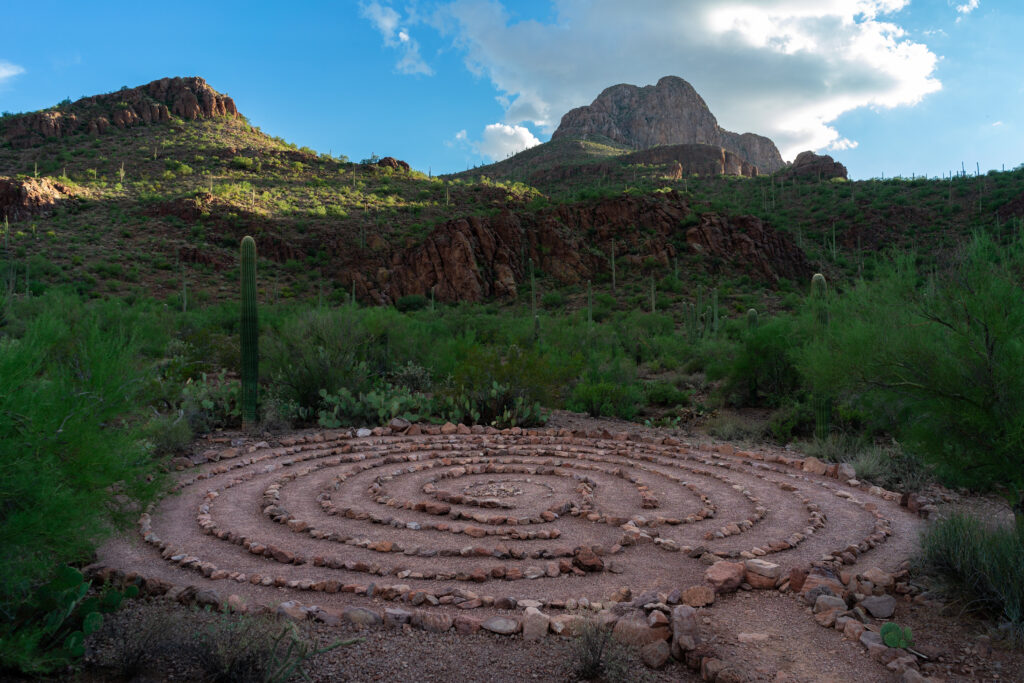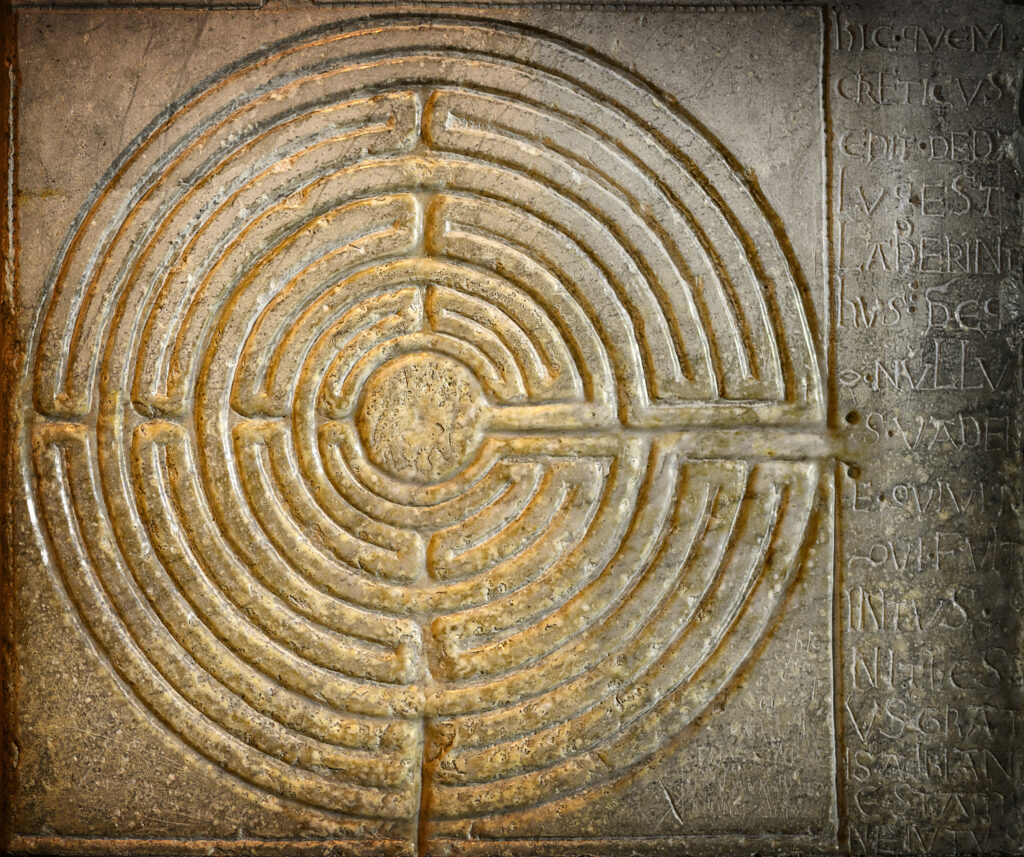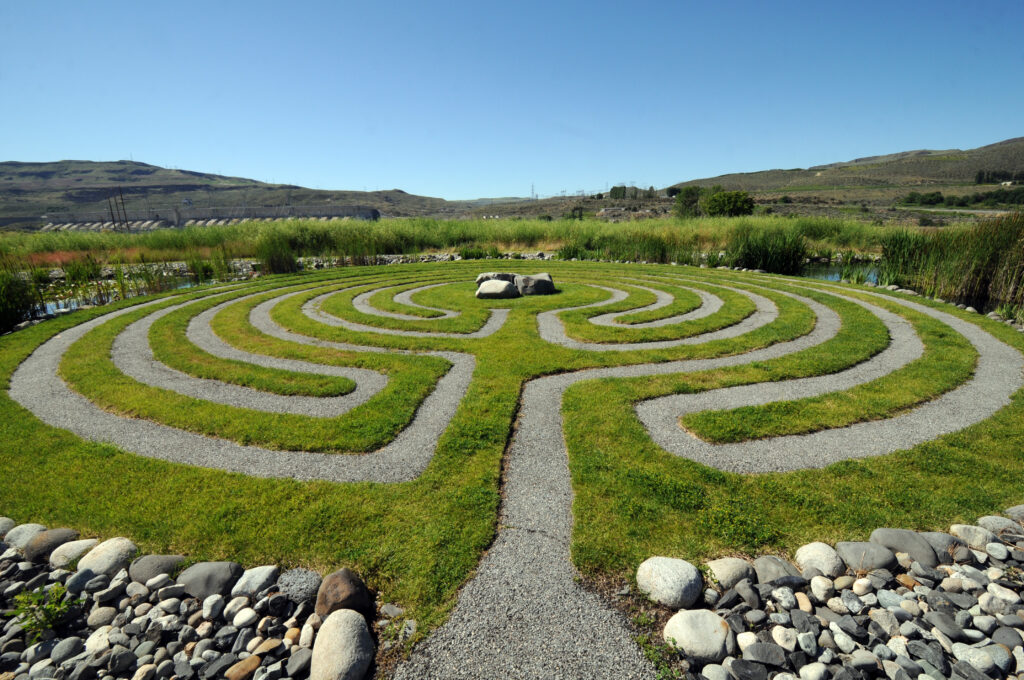When people call the Labyrinth Society with questions, they usually want answers to the questions on this page.
What is a labyrinth?
How are they used?
People walk the labyrinth for many reasons. Some do it to relax, some as a walking meditation, some just for fun. There are benefits to walking a labyrinth, which are being studied by our Research Committee.
See the Research area of this website for more information.
Aren't they strictly some sort of New Age phenomenon?
No, labyrinths are ancient and feature in many cultures worldwide. In the Christian world they first appear in North Africa in the 4th century AD. By the 12th century they began to appear in churches and cathedrals in Europe, the most famous example on the floor of Chartres Cathedral in France was created in the early 13th century, and labyrinths were widespread throughout Europe during the Middle Ages in many different forms.
They would also see a revival of popularity in the restoration of old churches and the building of new places of worship during the late 19th and early 20th centuries and have once again become widespread, worldwide, since the late 20th century. Today, churches of various denominations encourage people to walk the labyrinth during Lent and Advent, and there are over 2000 examples listed on the Worldwide Labyrinth Locator, indoors and out, in churches, retreat centers and similar locations.
Where did they come from originally?
Labyrinths have been found all over the world dating from the earliest antiquity. Their origins are lost in the mists of time.
How many labyrinths are there in the United States (or Canada, or New York, or wherever you live)?
We can’t tell you for certain, but a good way to find out is to check out the World Wide Labyrinth Locator and search for the area for which you want statistics.
The Locator will give you the number of labyrinths that have been entered into the site. There will be many more labyrinths than have been entered, but the Locator will give you a base number to start from. You will know there are at least as many as that number.






